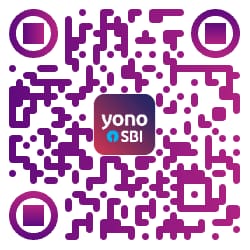Here, in one of the most important memoirs of our time, the author, former
Director of Intelligence Bureau, Government of India, 1950-65, unravels the truth behind the events and decisions during India-China conflict. Sourced to the classified material, non accessible to the public,and based on the author’s own association with the Government at the highest level, this monumental work should be the last word on the Subject.
TIBET’S HISTORY goes back to over two thousand years when Tibetan nomadic tribes were harassing the borders of north-west China. These tribes had their separate chiefs and the first attempted evolution of these tribes as a single Tibetan nation was achieved in 127 B.C. by king Nya-Tri-Tsenpo or Namtrhi, and he
claimed to be the first king of a united Tibet. He was succeeded by forty generations of kings. The original religion of Tibet was Bon. It was at the time of the twenty-eighth king, Lha-Tho-Ri-Nyen-Tsen, that Buddhism first entered Tibet; but the
consolidation of Tibet as a great nation and also the introduction of Buddhism as the State religion was done by the thirty-third king,Song-Tsen-Gampo (born in A.D. 629), who took his conquests far beyond the confines of the present area known as either Inner or Outer Tibet. He was the contemporaryof the Chinese Emperor
T’ai-Tsung. the founder of the T’ang dynasty. He demanded and married a Chinese princess and, to preserve political balance, also married a Nepalese princess, and it is believed that under their influence he brought two images of Lord Buddha and established them in the famous Jokhang temple which was built during his time and where they stil exist. He sent a young minister to India for study and on his return the present Tibetan alphabet was introduced.
“The Report of the Officials of the Governments of India and the People’s Republic of China on the Boundary Question” released by the Government in January, 1961, and printed in the
Government ot India Press in 1962 gives both the Indian description of the boundary and that put forward by the Chinese.Those who wish to have detailed information about the respective cases put forward by India and China about the boundary may refer to the above publication. But a very informative and
and concise book on the India-China border is the only by G.N. Rao entitled The India-China Border-A Reappraisal. Rao, who was one of the Advisers of the lndian team under J.S. Mehta, was fully acquainted with the border problem.It is clear from a study of the accounts given by the above mentioned documents that as between Ladakh on one side and
Tibet on its east, the border had been always traditional-the tradition going as far back as the tenth century and had never changed. Places like Demchok, Rudok and Lanak La had been mentioned in the accounts of foreign travellers going from Ladakh to Tibet or vice versa as situated on the boundary between the two territories.These documents would show that as regards the eastern boundary of Ladakh, there was complete information and there could be no doubt about its authenticity.
My Years With Nehru The Chinese Betrayal -B.N. Mullik
Click on the button below to contact us on WhatsApp, and buy.
HOW TO PAY
You can pay send your payment at any of the following UPI IDs, or scan the QR code, or send the payment directly to our bank:
INDIA POST PAYMENTS BANK

(IPPB) UPI ID= 9563646472@postbank
Malay De Sarkar
A/C No: 100005759940
IFSC: IPOS0000001
Mobile: 9563646472
STATE BANK OF INDIA

(SBI) UPI ID= 9563646472@sbi
Malay De Sarkar
A/C No: 32004843406
IFSC: SBIN0000162
Mobile: 9563646472


